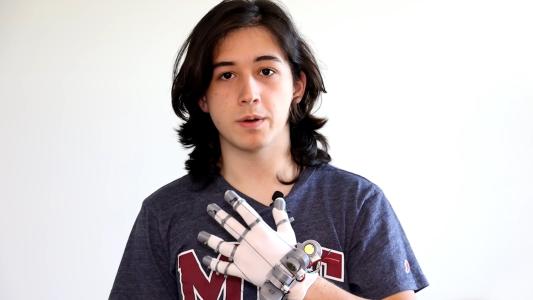Every year, more than 650,000 individuals are released from prison in the United States and two-thirds of them will be rearrested within three years. A crucial factor in determining whether an individual will return to prison is their ability to find stable employment. Unfortunately, while the coronavirus pandemic has disrupted employment for many people, it has been particularly detrimental to vulnerable populations, including the formerly incarcerated.
A new VR experience might offer one inroad for addressing this complex problem.
The project, called “Project Overcome,” was created as a collaboration between Accenture and Goodwill. It provides individuals transitioning back to the workforce a simulation of the interview process with an HR manager and a coaching session with a career counselor. It’s based on scenarios that formerly incarcerated individuals often encounter, like having to explain their criminal record.
Why VR?
The experience is structured as a branching narrative designed to give participants a low-risk space to practice and prepare for the process of searching, applying, and interviewing for a job.
Because incarceration is often stigmatized in the employment process, one major part of this training for participants is learning how to speak comfortably about their incarceration.
VR is especially effective in training for retention. Learning in virtual environments has been shown to be far more effective in increasing retention rates than other forms of learning. In one study, retention rates for VR learning were 75%, compared to 5% for lecture-based learning and 10% for reading.
“The instant, interactive feedback provided allows users to refine or rework their approaches, building the muscle memory and confidence required to successfully interview in person and enter the workforce,” said Dan Guenther, extended reality lead at Accenture, in a statement.
According to the creators, the narrative structure offers millions of possible unique combinations, which they hope keeps the experiences from becoming redundant. Instant feedback is provided at the end of the experience that displays the respective interview path and corresponding insights.
“Project Overcome” is currently available for community members at ten Goodwill locations in North America. It is the latest example in a growing trend to use VR as a means of helping the formerly incarcerated for its training and therapeutic potential.
In a recent multi-state and federal effort, VR was used to prepare people in prison for the “anxiety” of freedom through immersive experiences. These included more than 30 lessons for common tasks — from paying bills to operating a microwave to buying groceries via self checkout — set within environments they were likely to encounter on the outside.
VR has also been used to humanize incarcerated individuals and their experiences to the public, such as The Guardian’s “6×9” which attempts to highlight the psychological impacts of solitary confinement.
Recidivism remains a major problem in the United States, with 55% of all inmates released from state prisons arrested again at some point in the future. Some of the root causes of this problem cannot be addressed by VR, and critics worry that the use of new technologies might be a topical fix for systemic issues that require substantive changes across the public and private sectors.
More research is needed to understand the efficacy and optimal use cases of VR as a tool to curb recidivism, but Goodwill CEO, Steven Preston, is optimistic.
“‘Project Overcome’ helps individuals through a unique experience so they can feel empowered to tell their own narratives about their backgrounds to prospective employers,” he said in a statement.
